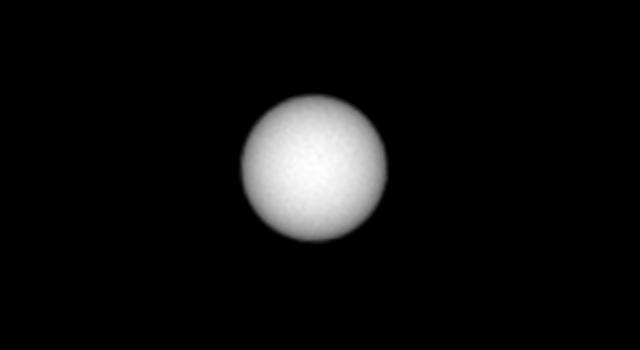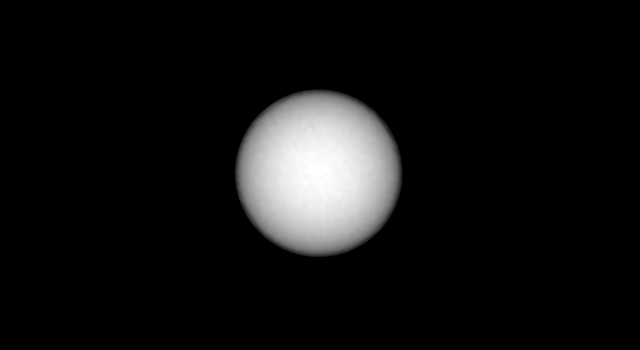Winston
Lorenzo von Matterhorn
- Joined
- Jan 31, 2009
- Messages
- 9,560
- Reaction score
- 1,748
Curiosity captured two solar eclipses on Mars
4 Apr 2019
https://phys.org/news/2019-04-curiosity-captured-solar-eclipses-mars.html
When NASA's Curiosity Mars rover landed in 2012, it brought along eclipse glasses. The solar filters on its Mast Camera (Mastcam) allow it to stare directly at the Sun. Over the past few weeks, Curiosity has been putting them to good use by sending back some spectacular imagery of solar eclipses caused by Phobos and Deimos, Mars' two moons.
Phobos, which is about 7 miles (11.5 kilometers) across, was imaged on March 26, 2019 (the 2,359th sol, or Martian day, of Curiosity's mission); Deimos, which is about 1.5 miles (2.3 kilometers) across, was photographed on March 17, 2019 (Sol 2350). Phobos doesn't completely cover the Sun, so it would be considered an annular eclipse. Because Deimos is so small compared to the disk of the Sun, scientists would say it's transiting the Sun.
In addition to capturing each moon crossing in front of the Sun, one of Curiosity's Navigation Cameras (Navcams) observed the shadow of Phobos on March 25, 2019 (Sol 2358). As the moon's shadow passed over the rover during sunset, it momentarily darkened the light.
Solar eclipses have been seen many times by Curiosity and other rovers in the past. Besides being cool—who doesn't love an eclipse? - these events also serve a scientific purpose, helping researchers fine-tune their understanding of each moon's orbit around Mars.
Before the Spirit and Opportunity rovers landed in 2004, there was much higher uncertainty in the orbit of each moon, said Mark Lemmon of Texas A&M University, College Station, a co-investigator with Curiosity's Mastcam. The first time one of the rovers tried to image Deimos eclipsing the Sun, they found the moon was 25 miles (40 kilometers) away from where they expected.
Phobos solar eclipse:

Deimos solar eclipse:

4 Apr 2019
https://phys.org/news/2019-04-curiosity-captured-solar-eclipses-mars.html
When NASA's Curiosity Mars rover landed in 2012, it brought along eclipse glasses. The solar filters on its Mast Camera (Mastcam) allow it to stare directly at the Sun. Over the past few weeks, Curiosity has been putting them to good use by sending back some spectacular imagery of solar eclipses caused by Phobos and Deimos, Mars' two moons.
Phobos, which is about 7 miles (11.5 kilometers) across, was imaged on March 26, 2019 (the 2,359th sol, or Martian day, of Curiosity's mission); Deimos, which is about 1.5 miles (2.3 kilometers) across, was photographed on March 17, 2019 (Sol 2350). Phobos doesn't completely cover the Sun, so it would be considered an annular eclipse. Because Deimos is so small compared to the disk of the Sun, scientists would say it's transiting the Sun.
In addition to capturing each moon crossing in front of the Sun, one of Curiosity's Navigation Cameras (Navcams) observed the shadow of Phobos on March 25, 2019 (Sol 2358). As the moon's shadow passed over the rover during sunset, it momentarily darkened the light.
Solar eclipses have been seen many times by Curiosity and other rovers in the past. Besides being cool—who doesn't love an eclipse? - these events also serve a scientific purpose, helping researchers fine-tune their understanding of each moon's orbit around Mars.
Before the Spirit and Opportunity rovers landed in 2004, there was much higher uncertainty in the orbit of each moon, said Mark Lemmon of Texas A&M University, College Station, a co-investigator with Curiosity's Mastcam. The first time one of the rovers tried to image Deimos eclipsing the Sun, they found the moon was 25 miles (40 kilometers) away from where they expected.
Phobos solar eclipse:

Deimos solar eclipse:




